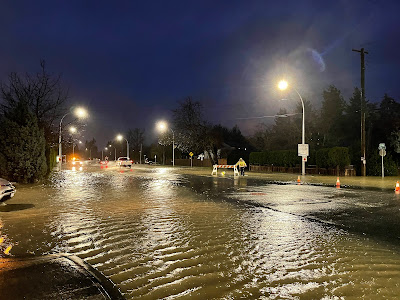As I posted about last month, the Metro Vancouver Regional District has formed a Flood Resiliency Task Force. This task force will act as a convener to ensure that our region is better prepared for future flooding events, which will increase in frequency and severity due to climate change.
The task force is currently working on an engagement process with nine First Nations who currently have communities in the regional district.
I hope that the task force and others involved in flood mitigation work use the Two-Eyed Seeing approach that looks at issues through Indigenous knowledge and ways of knowing combined with Western practices. For more information, you can view the TEDx Talk, “Etuaptmumk: Two-Eyed Seeing.”
So far, the task force has added the following objectives to its mandate:
- Identify the high-level status of Metro Vancouver infrastructure for flood resiliency
- Identify the high-level status of flood risk assessments by member jurisdictions
- Outreach to diking authorities and committees
The Fraser Basin Council released a draft of the Lower Mainland Flood Management Strategy in January 2021. Based on feedback received about the draft and this fall’s flooding events, work continues with refining the draft strategy.
The province also provided funding to The Fraser Basin Council to create a dikes vulnerability mapping that will create “additional modelling to compare different flood levels with current dike elevations and freeboard to estimate potential for overtopping or breaching and inform future upgrades to reduce the likelihood of overtopping or breaching.”
I will continue to follow the work of this task force and the vital work that it is doing.


No comments:
Post a Comment